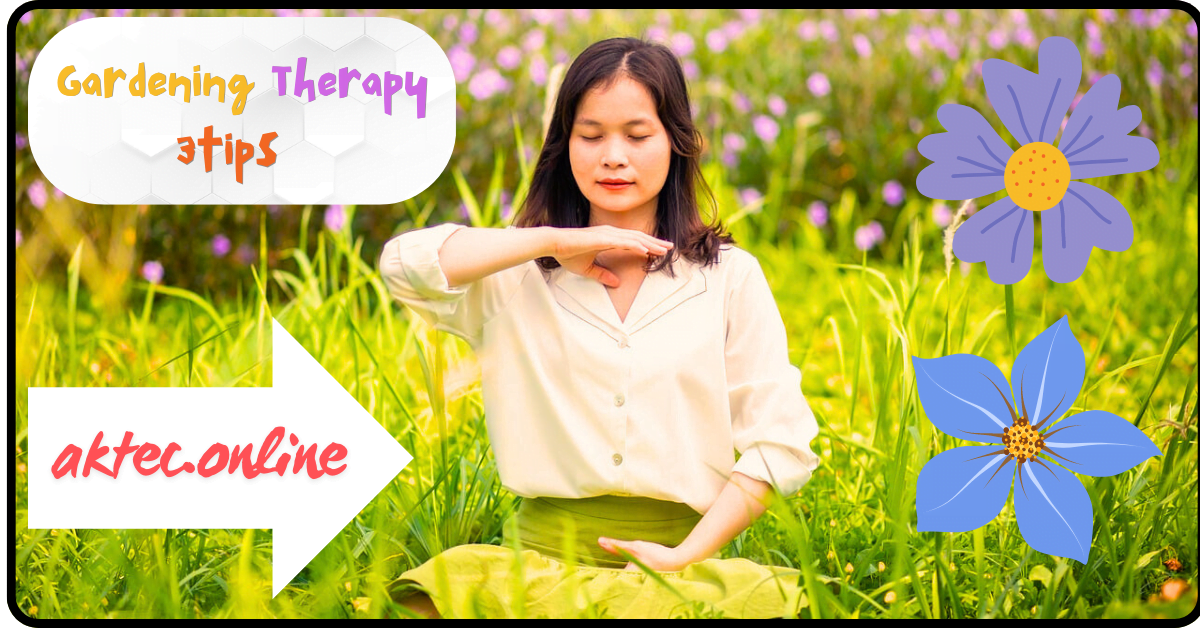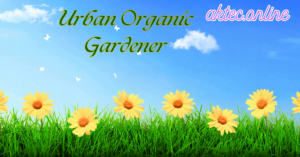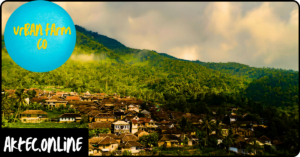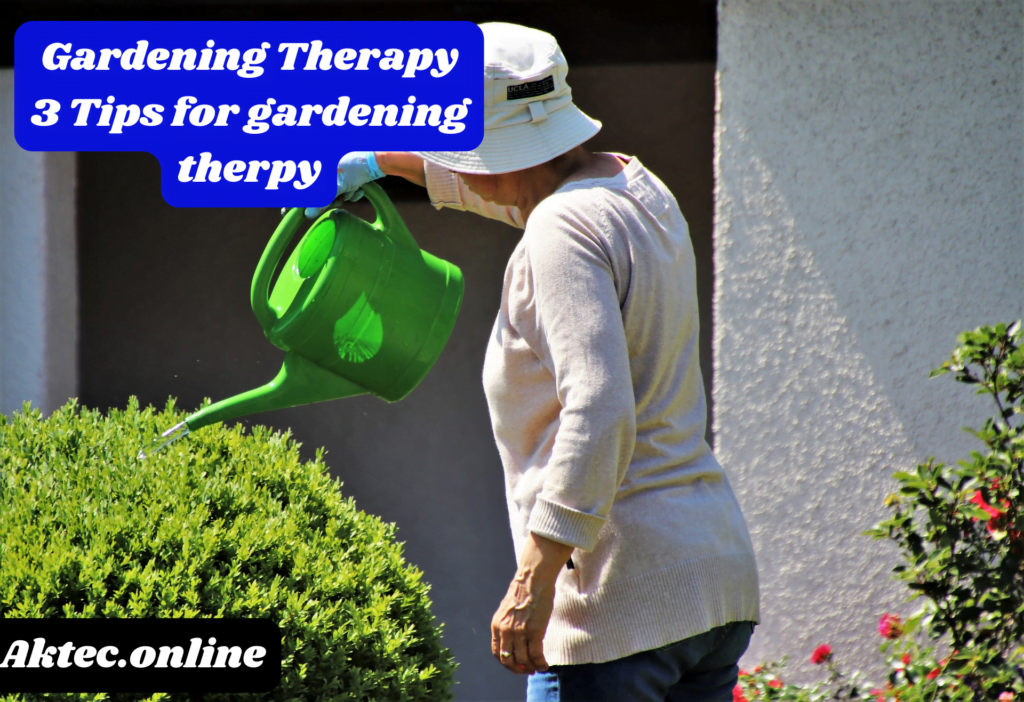
Unleash the healing power of plants. Discover how gardening therapy reduces stress, boosts mood, and improves well-being. Start your journey today.
Expanding the Power of Plants: Deep Dive into Gardening Therapy
Gardening therapy goes beyond simply planting seeds and watching things grow. It’s a meticulously crafted practice that leverages the restorative power of nature to cultivate well-being on multiple levels. Whether you’re seeking to unwind after a long day, combat feelings of isolation, or improve your cognitive function, gardening therapy offers a unique and rewarding path to a healthier you.
Unveiling the Psychological Powerhouse: Benefits for the Mind
Gardening therapy isn’t just about aesthetics; it’s a potent tool for tackling psychological challenges. Here’s a closer look at how it works its magic:
Stress Reduction and Relaxation
Repetitive tasks like weeding and pruning provide a meditative focus, allowing your mind to detach from worries and anxieties. Studies show that gardening therapy significantly reduces stress hormones like cortisol, promoting feelings of calmness and inner peace.
Mood Booster and Mental Health Champion
Spending time surrounded by nature has a well-documented antidepressant effect. Gardening therapy can alleviate symptoms of anxiety and depression by fostering a sense of accomplishment as you witness your plants flourish. Witnessing the life cycle of a plant, from a tiny seed to a vibrant bloom, can spark feelings of hope and optimism.
Mindfulness Maestro
The act of caring for plants requires focus and attentiveness to the present moment. Gardening therapy encourages mindfulness, helping you become more aware of your surroundings and thoughts. This mindful state promotes feelings of calmness and inner peace, allowing you to navigate daily challenges with a clearer and more grounded perspective.
Beyond the Bloom: Unveiling the Physical Benefits
Gardening therapy isn’t just good for your mind; it’s a workout for your body too! Here’s how:
Fitness Fanatic in Disguise: Gardening involves a range of physical activities, from digging and planting to pruning and carrying tools. These movements improve strength, flexibility, and cardiovascular health. Regular sessions can even lead to weight management as you burn calories while enjoying the outdoors.
Vitamin D Powerhouse
Sunshine exposure during gardening sessions promotes the production of Vitamin D, essential for bone health, immune function, and overall well-being. Vitamin D deficiency has been linked to a variety of health problems, so a dose of sunshine while gardening can be a natural preventative measure.
Fine Motor Skills Flourish
Tasks like planting seeds, handling delicate seedlings, and manipulating tools can improve dexterity and coordination, especially beneficial for individuals with physical limitations or recovering from injuries. Gardening therapy can be a form of physical rehabilitation, promoting motor skills and improving hand-eye coordination.
The Social Butterfly Blooms: Unveiling the Social and Emotional Benefits
Gardening therapy isn’t just a solitary activity; it can be a powerful tool for fostering social connections:
Community Blossoms
Therapeutic gardens often provide opportunities for social interaction with fellow gardeners. Sharing tips, working together on projects, and celebrating successes fosters a sense of community and belonging. This social interaction can be particularly valuable for those experiencing social isolation or loneliness.
Social Connection Catalyst
Gardening therapy can be a valuable tool for combating social isolation, especially for older adults or individuals with social anxiety. The shared activity fosters conversation and connection with others, providing a safe space to build relationships and combat feelings of loneliness.
Empathy and Compassion Through Caring
The act of nurturing plants cultivates empathy and compassion. Learning to care for the needs of living things promotes a sense of responsibility and fosters a deeper appreciation for the natural world. This sense of connection to nature can translate into a more compassionate and understanding approach to life in general.
The effectiveness of gardening therapy is not just anecdotal; it’s backed by numerous personal accounts and scientific research. Studies have shown significant improvements in mood, stress levels, and cognitive function in individuals participating in gardening therapy programs.
Testimonials from therapists, healthcare professionals, and participants themselves further highlight the positive impact of this therapeutic approach.
Cultivating Your Own Sanctuary: Practical Steps for Implementing Gardening Therapy
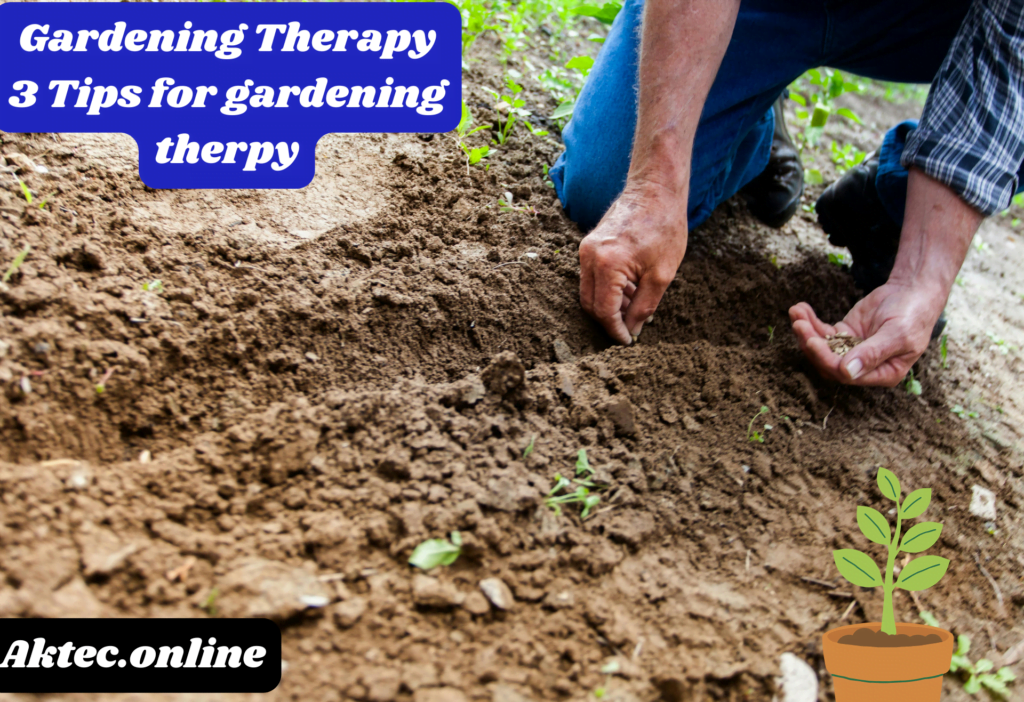
Now that you’ve explored the vast potential of gardening therapy, you might be wondering how to incorporate it into your life. Here’s a practical guide to get you started:
Crafting Your Therapeutic Oasis: Designing a Garden Space
Think Big or Small
Even a tiny balcony or windowsill can be transformed into a therapeutic haven. Choose a space that receives adequate sunlight and is accessible for working in comfortably.
Plant Power
Select plants that are easy to care for and provide visual interest. Opt for calming scents like lavender for stress reduction or brightly colored flowers to boost mood. Consider incorporating herbs or vegetables for an added layer of purpose and enjoyment.
Accessibility Matters
Design your space with accessibility in mind. Raised garden beds and ergonomic tools can make gardening enjoyable for individuals with physical limitations. Ensure wide pathways for easy maneuvering and incorporate comfortable seating areas for taking breaks and enjoying your surroundings.
Planting the Seeds of Success: Choosing Activities and Plants
Tailored Therapy
Consider your therapeutic goals when choosing plants and activities. For stress reduction, repetitive tasks like weeding or deadheading can be meditative. For improving fine motor skills, focus on tasks like seed planting or delicate pruning.
Seasonal Symphony
Choose plants suited to your local climate and consider indoor gardening options for harsh weather conditions. Plan activities around seasonal changes to maintain engagement throughout the year. Rotate tasks and explore new techniques to keep things fresh and exciting.
Integrating Gardening Therapy into Your Life:
Professional Guidance
Work with a therapist or healthcare professional to design a personalized gardening therapy program. They can help you choose suitable plants and activities based on your specific needs and goals.
Start Small, Grow Big
Begin with manageable tasks and gradually increase complexity as your skills and confidence grow. Consistency is key, so aim for short but regular gardening sessions to reap the long-term benefits.
Daily Dose of Nature
Integrate gardening activities into your daily routine. Start your day with a quick watering session or dedicate a specific afternoon time for tending to your plants.
Overcoming Challenges and Ensuring Safety
Accommodating Limitations
Raised garden beds and ergonomic tools can help individuals with physical limitations participate in gardening therapy. Therapeutic gardens can be designed with accessibility in mind, incorporating wide pathways and comfortable seating areas.
Seasonal Shifts and Environmental Factors
Choose plants suited to your local climate and consider indoor gardening options for harsh weather conditions. Plan activities around seasonal changes to maintain engagement throughout the year.
Safety First: Ensure proper drainage in your garden to prevent waterlogging. Use organic gardening practices to minimize exposure to harmful chemicals. Provide shade options and hydration sources for hot weather gardening sessions.
The Future of Gardening Therapy: A Blossoming Horizon
The field of horticultural therapy is constantly evolving, with research exploring its effectiveness in treating a wider range of conditions. Here’s a glimpse into what the future holds
Expanding Horizons
Research is exploring the potential of gardening therapy for individuals with dementia, autism spectrum disorder, and even chronic pain management. As the understanding of its benefits grows, gardening therapy is poised to become a more widely recognized and integrated therapeutic approach.
Technological Advancements
Technological advancements like virtual reality gardens hold promise for expanding access to gardening therapy programs for individuals with limited mobility or those living in areas with harsh climates. VR gardens can simulate the sights, sounds, and sensations of a real garden, providing a therapeutic experience regardless of physical limitations.
Holistic Well-being Champion
As the understanding of the mind-body connection deepens, gardening therapy is poised to play an increasingly important role in promoting holistic well-being in the years to come. By integrating physical activity, mindfulness practices, and connection with nature, gardening therapy offers a comprehensive approach to achieving optimal health and happiness.
By incorporating gardening therapy into your life, you can cultivate a sense of peace, purpose, and connection with the natural world. So, get your hands dirty, embrace the power of plants, and watch yourself blossom into a healthier and happier you.
Remember, even the smallest seed has the potential to grow into something beautiful. Let gardening therapy be the seed that helps you cultivate a life filled with well-being and joy.
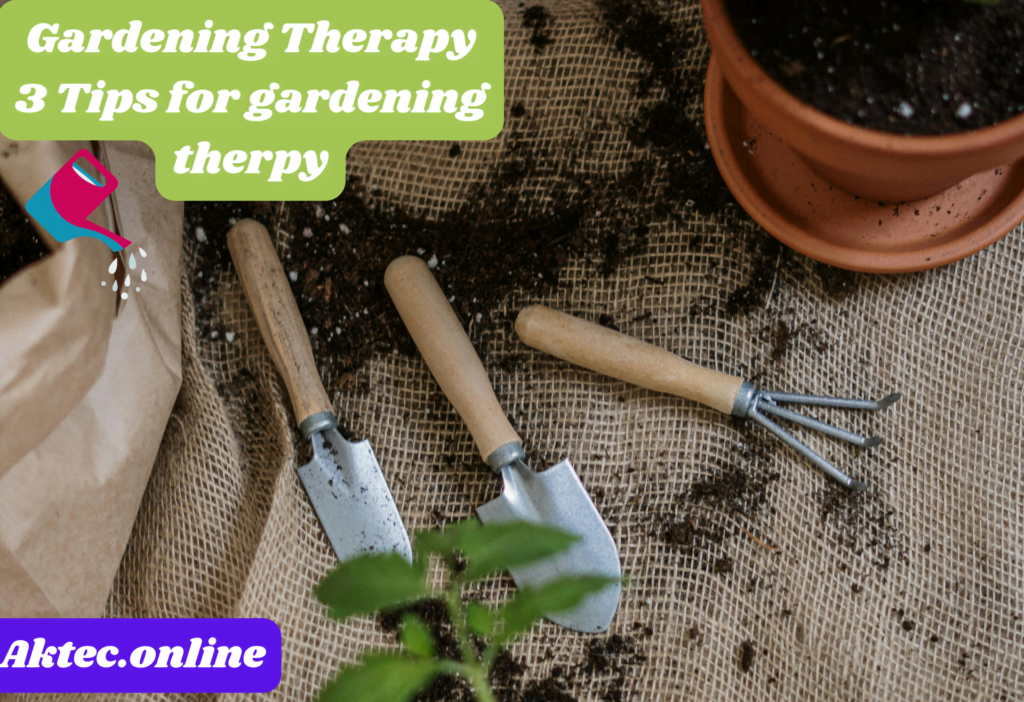
Conclusion
Gardening therapy is a powerful tool for cultivating well-being on multiple levels. It offers a unique blend of physical activity, mindfulness practices, and connection with nature, promoting stress reduction, improved mood, and a sense of accomplishment.
Whether you’re looking to unwind after a long day, connect with others, or simply enjoy the beauty of nature, gardening therapy can be a transformative experience. So, why not give it a try? You might be surprised at the positive impact a little dirt under your fingernails can have on your overall well-being. Remember, gardening therapy is not just about growing plants; it’s about growing a healthier, happier you.
FAQs
1. What is gardening in psychology?
Gardening is increasingly recognized as a beneficial activity for mental health. Studies suggest it can reduce stress, anxiety, and depression, while boosting mood, self-esteem, and focus. The act of nurturing plants, witnessing growth, and spending time in nature all contribute to these positive effects.
2. What is plant therapy called?
Plant therapy, also known as horticultural therapy or nature therapy, utilizes gardening and plant care activities to promote emotional and mental well-being.
3. What is a horticulture therapist?
A horticulture therapist is a healthcare professional who uses plants and gardening as a therapeutic tool to improve a client’s physical, cognitive, and emotional health. They work with individuals of all ages and abilities in settings like hospitals, rehabilitation centers, and community gardens.
4. Is gardening a meditation?
Gardening can be a form of mindfulness meditation. By focusing on the present moment, the sensations of touch and smell while tending to plants, and the rhythmic tasks involved, individuals can achieve a state of calmness and reduced mental noise.
5. What kind of person likes gardening?
There’s no single “gardening personality.” People from all walks of life enjoy gardening for its various benefits, including relaxation, creativity, a sense of accomplishment, and the satisfaction of nurturing something from seed to bloom.
6. Does plant therapy work?
Research suggests plant therapy can be effective in managing stress, anxiety, and depression. It can also improve cognitive function, social interaction, and motor skills in certain populations.
7. Is plant therapy all natural?
Plant therapy is considered a complementary therapy, meaning it can be used alongside traditional treatments like medication and psychotherapy. It’s not a substitute for professional medical care.
8. Why is plant therapy important?
Plant therapy offers a natural, accessible, and often enjoyable way to improve mental and emotional well-being. It can be particularly helpful for individuals who prefer non-pharmaceutical approaches or who find traditional therapy settings intimidating.
9. Who gave the concept of gardening as a psychotherapy?
While the exact origin remains unclear, the concept of using gardening for therapeutic purposes has likely been practiced informally for centuries. In recent decades, research and practice have solidified its role as a complementary therapy.
10. What is the garden analogy for mental health?
The garden analogy likens our mental health to a garden. Just as a garden requires care and attention to flourish, our minds need nurturing practices like healthy thoughts, self-compassion, and stress management to thrive.
11. What is the garden approach to learning?
The garden approach to learning emphasizes hands-on experiences, exploration, and discovery. It encourages students to actively participate in the learning process, similar to the active engagement involved in gardening.
12. What is gardening in a sentence?
Gardening is the practice of cultivating plants, often for ornamental or edible purposes, and can provide numerous benefits for both physical and mental health.
